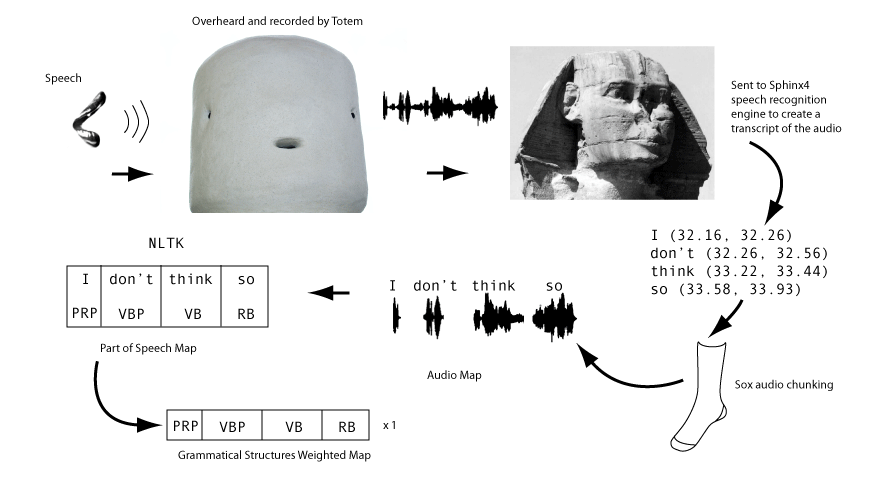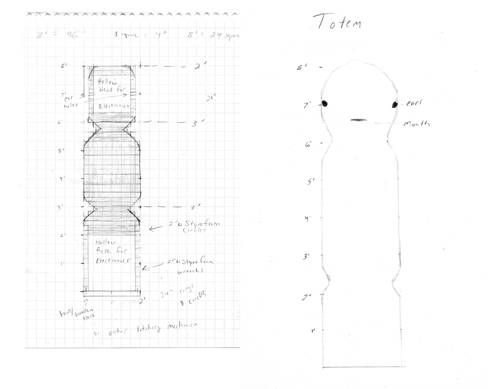Totem
Totem explores language as an act of power and force of control. Drawing inspiration from surveillance culture and artificial intelligence techniques Totem assumes the form of a ritual icon, eavesdropping on the conversation in its vicinity.
Drawing only on patterns of sound in its immediate environment Totem defines its own language: a grammar and lexicon based on machine intuition, an inductive bias that shapes what is heard. Divorced from their original context words assume new character, meaning and intentionality. Totem transforms overheard conversation and incidental noises into a constantly evolving composition of language-like sound.
Totem was made possible by generous contributions from the Foundation for Contemporary Arts and the support of Issue Project Room.
Technically Totem evolves a lexicon and grammar by taking audio recordings of its environment, running them through speech recognition, tagging the parts of speech in the recognized phrases, and storing the resulting grammatical structures.
After each recording the file is sent to Sphinx4 (Java) for speech recognition and Sox to edit the recording into chunks based on word timings. A map of each recording of a spoken word and its interpretation is saved. These words are then sent to NLTK (Python) for part of speech tagging and maps of the words, their assigned parts of speech, and the larger chains of grammatical structure are saved.
Meanwhile in a parallel process Totem begins to speak. Reflecting on what has been said, what grammatical structures and words are popular, Totem attempts to make new sentences by mapping parsed grammars to words that might fit, and speaking the result using fragments of overheard sound.
When the audio process is complete Totem once again listens in, and the cycle repeats.

Installation at Issue Project Room, 2010

technical diagram

technical diagram

sketch